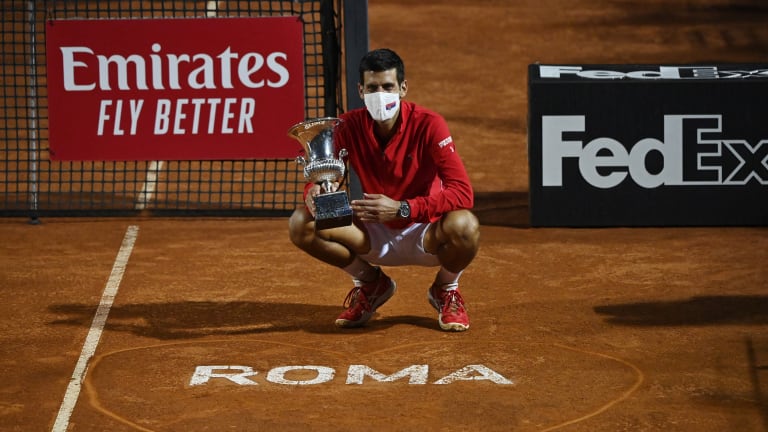Rome, Italy
Schwartzman tells Djokovic "you're a crazy player" as Serb wins Rome
By Sep 21, 2020Rome, Italy
Carlos Alcaraz didn't call Jannik Sinner during Italian's ban, won't tire of praising "amazing" colleague
By May 19, 2025Rome, Italy
Carlos Alcaraz beat Jannik Sinner in a chess-like two sets to win Rome, then offered him a very public welcome back
By May 18, 2025Rome, Italy
Carlos Alcaraz snaps Jannik Sinner's 26-match winning streak, wins Rome title
By May 18, 2025Rome, Italy
Italian tennis and padel president want to make Rome a fifth Grand Slam
By May 18, 2025Rome, Italy
Jannik Sinner vs. Carlos Alcaraz: Where to watch their Rome final, preview and pick
By May 17, 2025Rome, Italy
Jannik Sinner took “a straight punch to my face” from Tommy Paul, then punched his ticket to the Rome final
By May 16, 2025Rome, Italy
Coco Gauff vs. Jasmine Paolini: Where to watch their Rome final, preview and pick
By May 16, 2025Rome, Italy
Carlos Alcaraz advances to first Rome final, bids for seventh Masters 1000 title
By May 16, 2025Rome, Italy
Jannik Sinner vs. Tommy Paul: Where to watch their Rome semifinal, preview and pick
By May 16, 2025Schwartzman tells Djokovic "you're a crazy player" as Serb wins Rome
With his fifth title run at the Italian Open, Novak Djokovic showed off the underrated tactics that have made him the second-best clay-courter of the last decade. He’ll be one of three favorites again at Roland Garros.
Published Sep 21, 2020
Advertising

Schwartzman tells Djokovic "you're a crazy player" as Serb wins Rome
© Riccardo Antimiani
Advertising

Schwartzman tells Djokovic "you're a crazy player" as Serb wins Rome
© LaPresse
Advertising

Schwartzman tells Djokovic "you're a crazy player" as Serb wins Rome